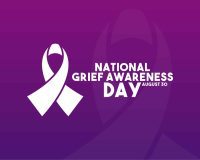Pediatric hospice care targets children from birth to 21 years of age and is used for a range of diagnoses including cancer, heart conditions, lung diseases, neurological disorders, and premature birth. Care can begin as soon as a diagnosis is made, be provided throughout treatment and follow-up, and continue until the final moments of life. Studies have shown that children receive more aggressive treatments for a longer period of time than seriously ill adults do.

To deal with the pain or side effects of these advanced treatments, some children with life-limiting complex diseases receive hospice care while they are being treated as well as when treatment stops. Navigating through the complex medical terminology of numerous medical specialists is overwhelming.
Frequent concerns in childhood cancers, which primarily affect the bone marrow, are the use of symptom-relieving interventions; including, for instance, the management and use of blood products that increase the child’s energy so he or she could play and interact with others, decrease bleeding problems, decrease breathlessness, and improve the ability to sleep and eat.
Hospice care addresses the physical, emotional and psychosocial symptoms associated with a child’s terminal medical condition. As with adult hospice care, it does not focus on curing or treating the disease, but on offering comfort and relief. Pediatric hospice team members can explain, according to your individual case, each procedure and help parents wade through the recommendations to decide what steps to take next.
Emotions run high when there is a seriously ill child in the family. Anxiety, depression, anger, guilt, and fear are just a few of the emotions the hospice team can help the whole family face. As with adult patients, the hospice interdisciplinary team usually consists of the primary physician (in this case being the pediatric physician), nurse practitioner, hospice aide, social worker, and interfaith clergy. Pediatric hospice services would also include specific symptom relief, helping with financial concerns, explaining needed medical procedures, and translating complicated medical forms.
Other critical team members include pediatric psychologists and child-life therapists. They often use art therapy — art, play, music, and behavioral observation — to treat the child. Because children may be unwilling to share information directly with their parents or their main caregivers due to their fear of hurting them or offending them, these skilled therapists can help with communication and interpretation of the child’s concerns and desires, as well as to provide the child with advice and an open invitation to reveal innermost thoughts.
When child-life therapists or children psychologists are involved in the care team, the child’s view of their situation and priorities are more likely to be solicited and honored. However, the role of these therapists’ participation is seen as being “not medically necessary,” by Medicare and Medicaid, and so their availability is often limited. In 2000 the American Academy of Pediatrics validated the role of the child-life therapist in providing them with the opportunity to participate meaningfully in his or her care decisions.
The chaplain also plays an important role in the pediatric hospice team. Children are able to feel the tension and are aware of the fact that they are in the center of it – they are also aware that they are ill and even that they are dying, even if they’re never specifically told. The chaplain, in this case, can provide encouragement, prayer, hope, as well as a hand to hold and a shoulder to lean on.
Studies have shown that children with cancer who were terminally ill were aware of the fact, often before their physicians and parents were aware of it. When adults and others denied how ill they were, the children felt abandoned. Informed professionals advise those involved with this type of case to involve children in their own care, clarify their questions, and answer them simply and honestly, remaining open to additional queries and disclosures of fears and concerns. Adults can help by allowing the child to see his or her sorrow, share how to respond, and offer mutual strength.
Hospice care is delivered primarily in the child’s home and will remain for an appropriate time, according to the needs of the child and their family. Bereavement care for the family is mandated for thirteen months after the death, but with no additional reimbursement provided to the hospice. Because of this, some programs provide written information on a monthly basis, while others may provide personal counseling and support groups. Unfortunately, it is rare to find a sibling-specific program for bereavement and so their needs generally go unmet. Children tend to be very short-stay hospice patients and it’s been found that the shorter the patient’s hospice stay, the longer the need for bereavement services for those affected by the death.
For terminally-ill children, the world consists of hospitals, people in masks, painful needles and sickness. Just as they need the medicines and treatment their doctors provide, they also need a special kind of care to ease their fears and make sure they’re not in emotional pain. The purpose of a child’s hospice stay can differ, depending on their particular needs and the resources available. Though in the United States, there is no requirement for hospice caregivers to have pediatric experience or education, they are still invaluable in helping seriously sick children be as comfortable as possible — emotionally, spiritually, and physically.
Click here to learn more about HCL’s Kid’s Path program.
Additional Links:
https://www.vitas.com/resources/hospice-care/what-is-pediatric-hospice-care
http://www.deathreference.com/Ce-Da/Children-Caring-for-When-Life-Threatened-or-Dying.html
https://www.nhpco.org/pediatric
https://www.nhpco.org/sites/default/files/public/ChiPPS/ChiPPS_Aug-2012_Issue28.pdf




